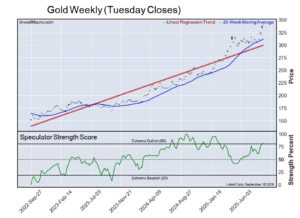The RBA left the cash rate on hold at 4.35%, but their rhetoric suggests the Board is more alert to upside inflation risks. Indeed, the RBA Board appears less certain that inflation is moderating as they’d like and there’s lingering concerns about persistent price pressures.
The Reserve Bank left the cash rate unchanged at 4.35% in a widely-expected decision.
The RBA last hiked in November 2023 and a ‘high for longer’ theme has played out since.
Importantly, in today’s meeting the Board debated hiking the cash rate or leaving the cash rate alone. The Board did not consider cutting the cash rate. The decision was made to stay the course.
Michelle Bullock in her press conference stuck to her usual mantra that the board is not ruling anything in or out. However, she highlighted that the evidence on inflation is that “demand is still too strong.”
Governor Bullock’s remarks, together with the changes to the accompanying Board statement, reveal the RBA has become more alert to upside inflation risks. Additionally, the Board appears less confident inflation is moving sustainably towards the inflation target within a reasonable timeframe.
In perhaps one of the more telling remarks of the press conference, Bullock said “we need a lot to go our way if we are going to bring inflation down to the 2-3% target” and the economy’s narrow path is “getting a bit narrower.”
However, she also emphasised that the case for a rate rise isn’t increasing. Instead, there are a few factors that are making the Board a bit more alert to the upside risks. It means the data flow between now and the next Board meeting will be critical, especially the June quarter inflation read and data on the labour market.
Governor Bullock’s vigilant rhetoric was echoed in the tone of the Board statement where several notable changes were made.
First, the RBA referred to inflation as “proving persistent” and the statement called out the persistence of services price inflation as a key uncertainty. In the press conference, Bullock suggested the monthly inflation measure does not give a solid enough read on inflation momentum, meaning they must rely on the less timely quarterly inflation report.
Second, the statement notes that output growth in most advanced economies appears to have troughed. The RBA has previously highlighted the downside risks to global growth could pose to the Australian economy.
Third, the statement introduced a reference to supply chain risks, relating to geopolitical risks and likely reflecting the recent pick up in shipping costs.
Finally, the last paragraph, arguably the most critical of the statement, stresses the step up in the RBA’s alertness. The RBA notes that while recent data have been mixed, they flag that it has “reinforced the need to remain vigilant to upside risks to inflation.”
Moreover, in the final sentence of the statement, the Board has reinstated the words indicating “they will do what is necessary to achieve that outcome”. This line was last used in February 2024 and the return of these words underscores that the Board is more attentive to upside risks and willing to respond should these risks materialise.
The reference to house prices also returned to the statement alongside the lift in household wealth. House prices were last mentioned in a Board statement late last year.
More broadly, another key area of uncertainty is the outlook for consumption. Indeed, the word uncertainty has been used more times today than in any Board statement in the last six months.
The RBA expects consumption growth to strengthen, as lower inflation and tax cuts drive a lift in real disposable incomes later this year. But the RBA also sees a possible scenario where consumption growth lifts more slowly and where the improvement in household incomes is mostly saved. The larger than previously estimated run down in savings buffers could be consistent with this scenario where households save a larger share of the tax cuts and cost of living support measures to help rebuild buffers. This was called out as a particular area of uncertainty; the RBA was unsure of the extent to which low savings was a sign that consumers were confident enough to spend or unable to save due to pressures on income.
The RBA next meets on August 6 and just before this meeting, the quarterly inflation report is released on July 31. The RBA will have a more comprehensive read on inflation and the economy at the time of this meeting, although it will need to digest the impact of the Stage 3 tax cuts and other fiscal support measures that come into effect on July 1. These effects will not become fully apparent until well after the August meeting.
Our inflation forecasts for the upcoming June quarter report are below that of the RBA’s, leaving us comfortable with our view that the next move in the cash rate will be down and arrive in November. But we acknowledge there’s a greater risk of rate relief slipping into next year. Swap markets have no rate cuts priced for this year and two rate cuts priced in for 2025. The timing of the first rate cut has been pushed out from February to April next year after today’s meeting.
If the concerns around persistent price pressures continue, we think the RBA is more likely to keep the cash rate on hold for longer than to hike again, but the RBA remains data dependent and the upcoming data will be telling.









